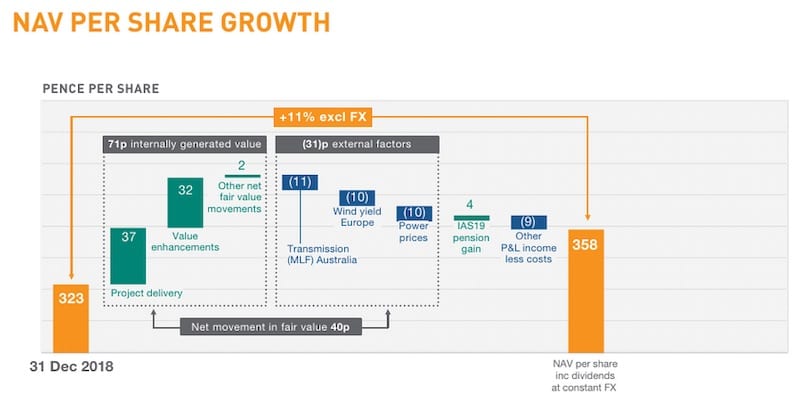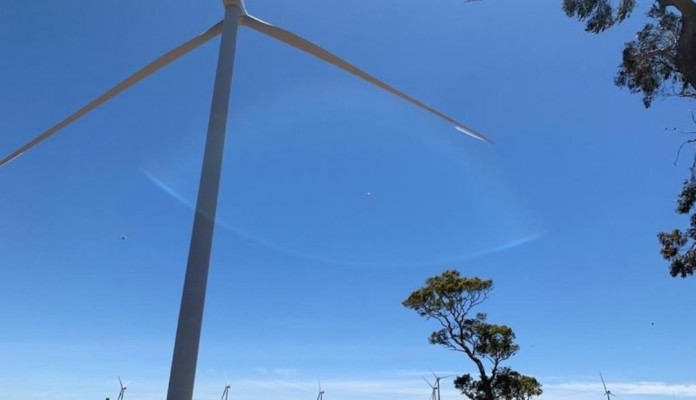UK-based infrastructure heavyweight John Laing has confirmed plans to offload its Australian solar and wind energy assets and quit the market entirely, after a year of project delays and transmission losses put further investment in the sector firmly in the too-hard basket.
The news delivers a fresh blow to the Australian large-scale renewable energy market, already reeling from a combination of zero federal government policy support, major development delays around grid congestion and connection hurdles, and revenue compromised by changes to marginal loss factors – calculations of how much of a generator’s output is credited by the market operator.
These MLFs, or “transmission losses,” were highlighted as a major deciding factor behind John Laing’s decision to pull up stumps on wind and solar investment in Australia, and are just one of a number of rules and regulations that are considered no longer “fit for purpose” in the rapidly transitioning energy market.
In the company’s full-year results announcement on Tuesday morning (UK time) the owner of the recently completed 57MW Cherry Tree wind farm in Victoria, and various other much larger projects, said it had decided to quit stand-alone solar and wind generation development “across all geographies” including Europe because the ‘returns no longer reflected the risks.’
And while Australia was not alone in the too-hard basket, it did rate a special mention from John Laing executives in the company results webcast on Tuesday, for the “material impact” its particular set of problems had had on the company’s bottom line.
“In H1 last year our wind and solar assets were affected by industry-wide issues, specifically in Australia and Europe,” said John Laing CEO Olivier Brousse in comments during the webcast.
In Australia, the major headwind was singled out as transmission losses, or “new projects coming online faster than the ability of the grid operator to increase the capacity of the transmission lines,” as Brousse put it.
“The impact was material. So much so that we had to reduce the value of these assets in our books, by the equivalent of 24 pence per share at the half-year.” (See chart below)
 On its Australian assets, John Laing reported a write down of £66 million ($A120 million) on three renewable projects under construction in August last year.
On its Australian assets, John Laing reported a write down of £66 million ($A120 million) on three renewable projects under construction in August last year.
As RenewEconomy editor Giles Parkinson reported at the time, that write down marked the first tangible example of the impacts of the MLF rule revisions since they were finalised in late May.
It also resulted in John Laing putting a then temporary halt to new investments, pending any change in the way transmission losses were calculated. It lobbied intensely for changes, along with 24 other wind and solar investors with more than $15 billion of projects in the pipeline.
But of course, that change did not come. Rather, the Australian Energy Market Commission last week opted to side with incumbent generators and reject proposed changes to the calculated of MLFs.
The fallout from this, coupled with lengthy connection delays and the uncertainty around the lack of a large-scale renewables policy beyond the 2020 RET, is taking its toll on investment in big wind and solar in Australia, which according to Bloomberg New Energy Finance plunged by 60 per cent in 2019.
And it has claimed scalps and led other major investors to abandon Australia for greener pastures. Notable among the latter is the listed construction giant Downer Group, which in January signaled a dramatic exit from the large-scale solar business, saying it was too hard.
More are bound to follow. Victoria state energy minister Lily D’Ambrosio told RenewEconomy’s Energy Insiders podcast last month that she had had first-hand experience of the frustration being felt by renewable energy investors.
“Just last week we had a major investor in Australia who came into the office to express his great frustration, in terms of regulatory barriers, the physical barriers in being not being able to hook up new projects,” D’Ambrosio said.
“He was very clear – unless things change, he was going to possibly bypass australia and an investment destination. This is a crazy situation and we can’t allow it to continue.”
From John Laing, the message was equally clear. “We stopped looking at investment opportunities in stand-alone wind and solar farms across all our regions, because we felt that the returns were no longer sufficient to cover the external risks that we faced,” said Brousse in the webcast.
Furthermore, the company is preparing its £1.5 billion global portfolio of wind and solar assets for sale, “to take advantage of strong demand for operational renewable energy assets.”
In Australia, Brousse said, this could mean bunching its wind and solar assets together – which include the 170MW Finley solar farm, the 255MW Sunraysia solar farm, and the Granville and Kiata wind farms, as well as small stakes in each of the three stages of the Hornsdale wind farm – in a bid to “access large investors with deeper pockets.”
Finley and Sunraysia have both been affected by grid congestion issues, with Sunraysia in particular suffering delays which has led to a potential dispute with contractors Decmil, another company that is abandoning the full service solar contracting market because of the growing complexity and rule changes.
John Laing CFO, Luciano Germinario, stressed that the asset sale process was still in the very early stages.
“We just started the marketing of our Australian wind and solar portfolio … we are literally in the soft marketing stage, so it’s early days, but the signals have been positive on the renewable energy side,” she said during the webcast.
The good news, if you were to go looking for it, is that John Laing has not written off Australia or its renewable energy sector, altogether, but is – in Brousse’s words, “instead focusing on the opportunities presented by the wider energy transition.”
“Wind and solar generation are only one part of the renewable energy industry, which itself represents only a portion of a wider the energy transition market that is rapidly gaining momentum,” Brousse said in his CEO’s review in the half-year results statement.
“We believe John Laing is well positioned to provide solutions to some of the complex infrastructure requirements that energy transition will involve, particularly decarbonisation,” he added.
“We also remain active in renewable energy more generally, including in waste to energy where we made our first investment in Australia during the year, leveraging experience gained in the UK.”






